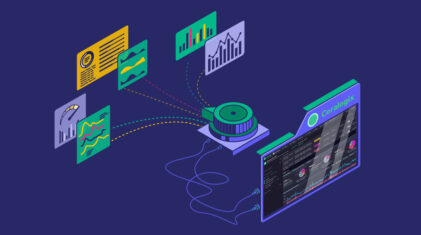Is your CDN really at the edge?
tldr: This post discusses how to measure CDN request locality without indexing a single log. The function of a CDN is to bring cacheable data, like…
Whether you are just starting your observability journey or already are an expert, our courses will help advance your knowledge and practical skills.
Expert insight, best practices and information on everything related to Observability issues, trends and solutions.
Explore our guides on a broad range of observability related topics.

Marketing and Site Reliability teams rarely meet in most organizations. It’s especially rare outside the context of product marketing sessions or content creation. With observability now pivotal to success, we should be looking to bring the two together for technical and commercial gains.
In this piece, we’re going to explore the meaning of observability and its relevance to marketing metrics. We’ll cover which metrics you might want to observe, and how you might look to drive revenue through technical measurements and key marketing metrics.
Without covering the topic of observability in its totality, we can say that observability is deep insight and overall visibility of distributed systems and applications. Monitoring is essentially data collection, and observability is the ability to use that to produce contextual insights and analysis.
There are a whole host of key marketing metrics that are collected by organizations in data aggregation tools like Tableau. These measurements include things like click rate, monthly traffic numbers, conversion rate, and time spent on page.
With the principles of observability in mind, these different data points can be monitored and aggregated to provide insights. With key marketing metrics stored within your observability platform, you can understand what is and isn’t working for users based on otherwise siloed metrics.
Correlating technical measurements with marketing metrics can reveal problems on your site or platform. In this section, we’ll discuss a few scenarios which show the benefit of viewing technical or business measurements with added context from your key marketing metrics.
Picture this: you are the WebOps lead for a growing eCommerce business with high and growing numbers of web traffic week-on-week. While your traffic numbers are high and click-through rates remain strong, your conversion rates are much lower than projected. Conversion rates remain one of the key marketing metrics in eCommerce.
Business teams often focus on traditional causes for low conversion (shipping fees, load times, etc.). By comparing conversion rates with technical measurements you can uncover the true root cause.
With data pulled from Tableau (aggregating all of your marketing metrics) alongside your platform latency times and error logs for your payment solutions provider, you can see that the low conversion is easily attributable to slow checkout load times and failure to authorize a secure connection to your payments platform.
Engagement with your website or platform may be indicated in different ways. Clicking on content, downloading resources, or opening an application can all show that users or potential customers are engaging with your platform or product.
Bounce Rate is a key marketing metric that is a good indicator of engagement, showing the number of single-page sessions. The higher the bounce rate, the less users are exploring your site or platform.
If you’re confident in your content, looking at technical measurements together with marketing metrics can help indicate what’s going wrong. For example, if you have a high bounce rate on a page that links to other parts of your platform. Comparing which pages have a high bounce rate with benchmark reports could alert you to errors or UI problems caused by recent changes.
In this way, marketing metrics can act as a diagnostic tool for deeper technical problems, which otherwise may have been caught much later.
In addition to using marketing and technical metrics for issue diagnosis, the same principles can be applied to grow revenue.
Data relating to page depth shows how much traffic to your site is distributed amongst different pages. While closely tied to bounce rate, page depth focuses more on time spent moving between different pages.
This marketing metric is great for understanding which of your pages are the most attractive to site visitors, and which are successful in pushing them to another part of the site. Serverside errors are some of the biggest technical blockers in achieving higher page depth.
By analyzing the correlation between purchases, bounce rate, and page depth, you can optimize your site for increased revenue. For example, if you have a landing page that generates high page depth, consider linking this to a product page or payment gateway.
One of the best things about observability is that it provides an open foundation for further exploration.
By combining marketing metrics and technical measurements in one observability platform, you turn your site users into diagnostic tools. In a world where numerous releases per day are common for the modern enterprise, this is invaluable.
On top of that, the cross-pollination of marketing and technical data may allow you to boost your revenue. From a ‘single pane of glass view’, you can see what pages work for you, why they work the best (serverside performance), and what that translates to in terms of revenue.
Coralogix is now working to enable this kind of cross-organization observability. It will provide the ability for collaboration between technical and marketing teams in a way that hasn’t been seen before. As always with observability, with the right platform helping you understand your data, anything is possible.

tldr: This post discusses how to measure CDN request locality without indexing a single log. The function of a CDN is to bring cacheable data, like…

AWS Elemental MediaTailor provides a wealth of information via metrics, but one key feature that is very difficult to track is the Transcoding performance. What is…

Metrics are key to monitoring system health and performance but you probably are ingesting far more metrics than you will ever need or use. The issue…
